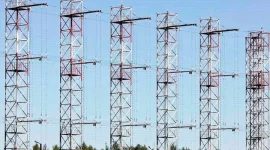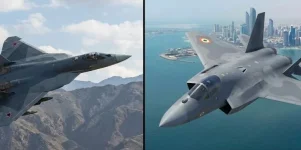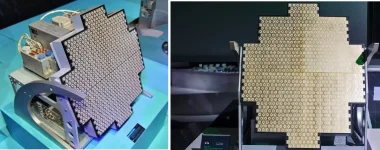- Views: 1K
- Replies: 3
India's Advanced Medium Combat Aircraft (AMCA), a 5.5-generation stealth fighter under development, may be getting a second seat, but not for the reasons you might expect. Instead of training or conversion purposes, this potential modification is geared towards enhancing the AMCA's ability to control combat drones.
This intriguing possibility was hinted at by an official from the Aeronautical Development Agency (ADA), who neither confirmed nor denied the potential for a two-seater AMCA variant in the future.
While the Indian Air Force (IAF) has not specifically requested a two-seater AMCA for training, the discussion revolves around operational enhancements, particularly in managing unmanned combat aerial vehicles (UCAVs).
Integrating UCAVs like the Ghatak with manned fighters has been a strategic vision for the AMCA program. The complexities of modern warfare require fighter pilots to manage drone swarms alongside their own operations, a task potentially eased with a dedicated second crew member.
The debate lies in how best to manage these drones from a single-seat fighter. While advanced artificial intelligence could interpret pilot commands and autonomously manage drones, a dedicated Weapons System Officer (WSO) in a two-seat configuration might offer superior control and decision-making in dynamic combat situations.
However, adding a second seat to a stealth aircraft like the AMCA presents significant design challenges. Modifying the aircraft to accommodate another crew member while preserving its low-observable radar characteristics is a complex and costly endeavor.
Any changes would need meticulous engineering to ensure the stealth profile remains uncompromised. This could involve reworking the aircraft's geometry, potentially altering airframe materials, and redesigning internal systems, all while maintaining the AMCA's performance and stealth metrics.
Ultimately, the decision to proceed with a two-seat AMCA will depend on data analysis, cost-benefit assessments, and whether the strategic advantage outweighs the development and operational costs.
If implemented, this modification would place the AMCA among a select group of stealth fighters with two-seat variants, potentially enhancing its capabilities in the increasingly complex battlespace of the future.



